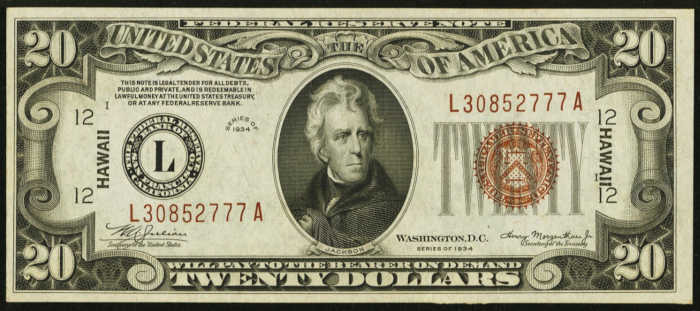Are you trying to figure out whether your 1985 $20 bill is real or counterfeit? This detailed guide will help you settle the question. We’ll go over the key security features to look for on 1985 series $20 bills to spot fakes, and we’ll also explain the differences between real and counterfeit bills in terms of engraving, color, text, paper quality, and other important details

The Old $20 Dollar Bill: Real Or Fake
They are not fake however the $20 bill has undergone several design updates over the years, the older versions have gradually phased out. When the new design was introduced, the old bills were collected from banks and sent to the Federal Reserve for destruction. This process ensured that the old bills couldn’t be used or counterfeited.
The transition period allowed people and businesses time to get familiar with the new design and its security features, minimizing any confusion. So, while older $20 bills might still be real, they are no longer in circulation, and the new design is the one currently used.
How To Check If My Dollar Bill Is Real Or Fake
Check The Watermark
To check if a 1985 $20 bill is real, hold it up to the light and look for the watermark of President Jackson to the right of his portrait. If the watermark is clear, the bill is likely genuine; if it’s missing or blurry, it could be counterfeit.
Check The Security Strip
To verify if a $20 bill is real, hold it up to the light and look for a thin vertical strip embedded in the paper. This strip should only be visible when the bill is held to the light. If you can’t find the strip or see it without any light, the bill is probably counterfeit.
Verify the Color-Changing Ink
To check the color-changing ink on a $20 bill, look at the numeral “20” in the lower right corner on the front side of the bill. Hold the bill up to a light and tilt it slightly. You should see the color shift from copper to green. This feature was introduced in 1996 to help detect counterfeit bills.
Here’s How to Spot a Counterfeit $20 bill by Comparing it to a real one:
Color-Shifting Ink
- Real Bill: The number “20” changes from green to copper when you tilt the bill.
- Fake Bill: The color doesn’t shift; it stays green or lacks color.
Watermark
- Real Bill: A faint image of Andrew Jackson is visible from both sides when held up to the light. Fake Bill: The image is missing or unclear under light.
Paper Quality
- Real Bill: Made from crisp, firm paper that is 75% cotton and 25% linen. Fake Bill: Feels flimsy and different from genuine currency.
Conclusion
Older $20 bills have a vertical security thread embedded in the paper, positioned to the left of the Federal Reserve Bank seal. This thread is marked with “USA” and “TWENTY” in a repeating pattern and can be seen from both sides of the bill. When exposed to ultraviolet light, the thread glows green. The bill is made from a blend of linen and cotton, with red and blue security fibers woven in, giving it a unique texture.
Also read: Yodaer Cooling Ace
